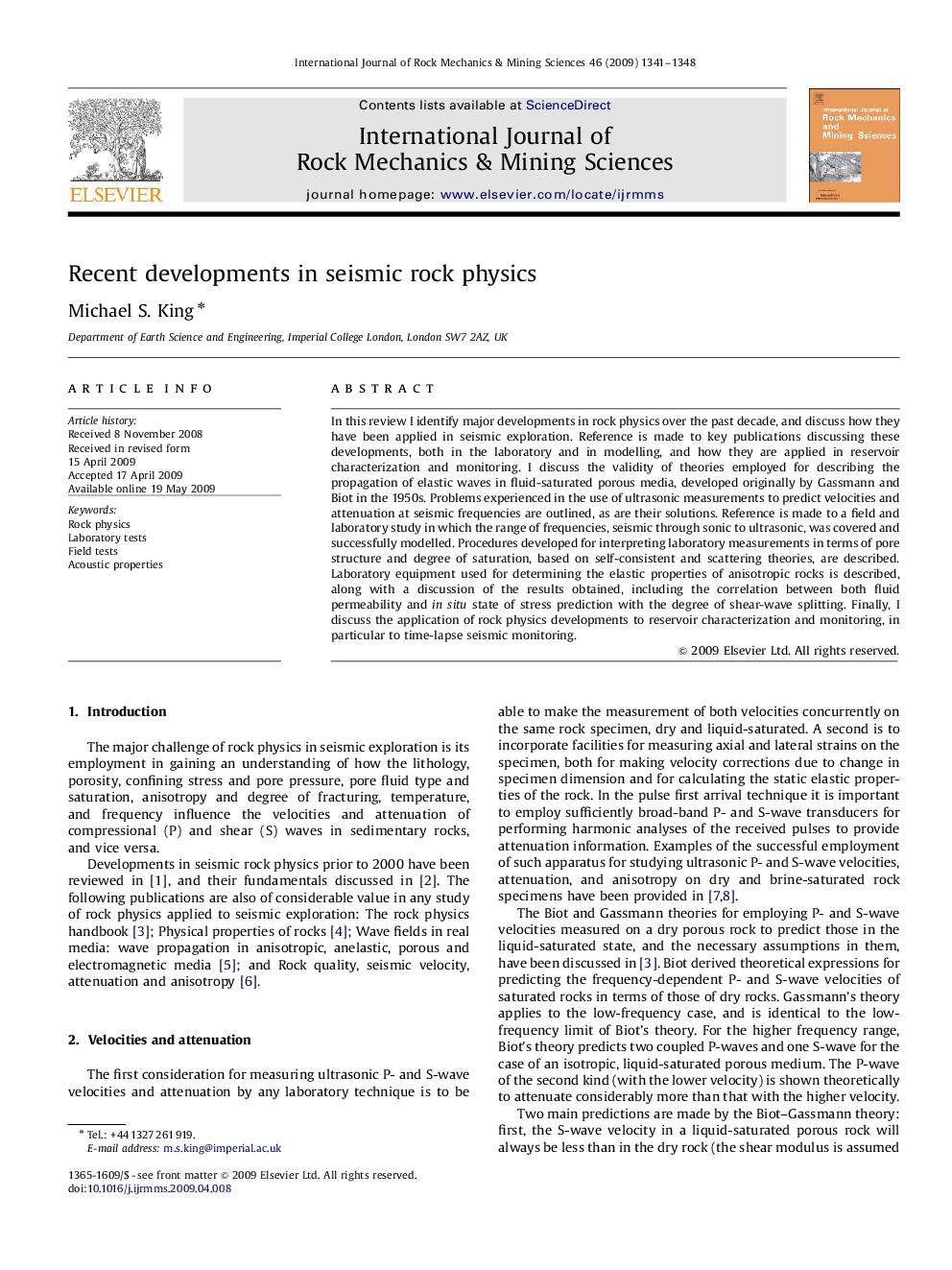| Article ID | Journal | Published Year | Pages | File Type |
|---|---|---|---|---|
| 809947 | International Journal of Rock Mechanics and Mining Sciences | 2009 | 8 Pages |
In this review I identify major developments in rock physics over the past decade, and discuss how they have been applied in seismic exploration. Reference is made to key publications discussing these developments, both in the laboratory and in modelling, and how they are applied in reservoir characterization and monitoring. I discuss the validity of theories employed for describing the propagation of elastic waves in fluid-saturated porous media, developed originally by Gassmann and Biot in the 1950s. Problems experienced in the use of ultrasonic measurements to predict velocities and attenuation at seismic frequencies are outlined, as are their solutions. Reference is made to a field and laboratory study in which the range of frequencies, seismic through sonic to ultrasonic, was covered and successfully modelled. Procedures developed for interpreting laboratory measurements in terms of pore structure and degree of saturation, based on self-consistent and scattering theories, are described. Laboratory equipment used for determining the elastic properties of anisotropic rocks is described, along with a discussion of the results obtained, including the correlation between both fluid permeability and in situ state of stress prediction with the degree of shear-wave splitting. Finally, I discuss the application of rock physics developments to reservoir characterization and monitoring, in particular to time-lapse seismic monitoring.
